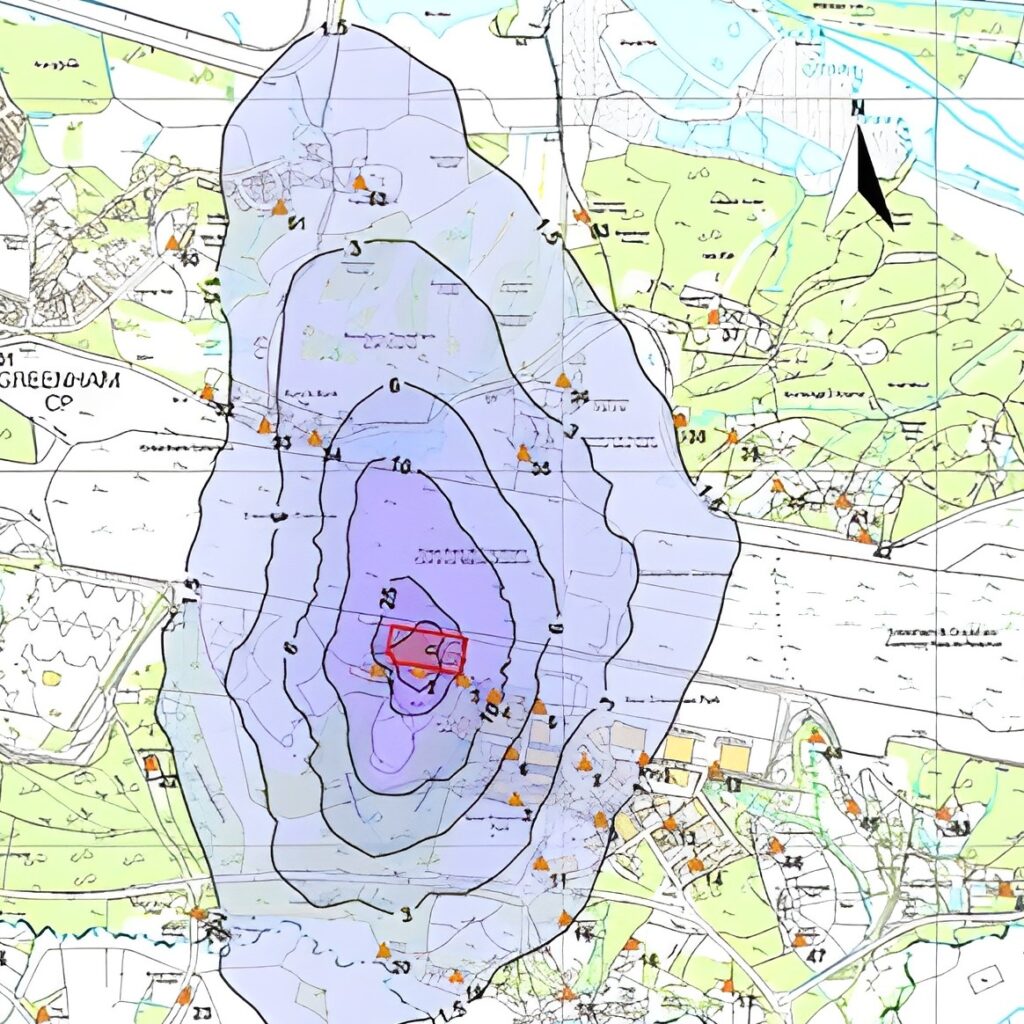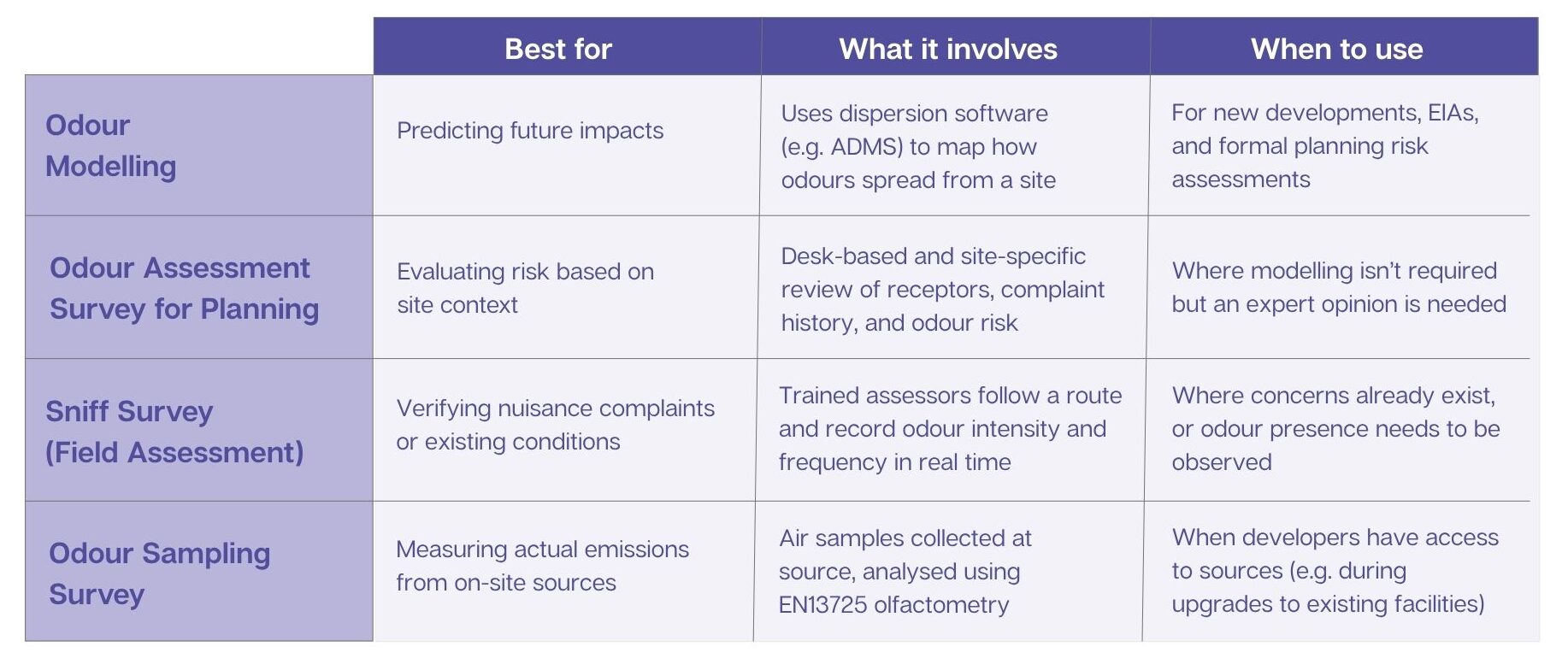WHAT IS THE ROLE OF ODOUR MODELLING IN PLANNING APPLICATIONS?

When it comes to securing planning permission, odour can be a silent obstacle. Noise and air quality are often top of mind. But odour, if left unassessed, can trigger objections, complaints, or even refusal. This is where odour modelling steps in.
At Silsoe Odours, we help clients quantify and predict odour impacts. We do this using specialist software and expert assessment. Here’s why that matters.
WHY MODEL ODOUR?
Odour is subjective, but planning decisions need objective evidence. Using tools like ADMS (Atmospheric Dispersion Modelling System), we can predict how odours spread from a site. Our models account for 5 years of weather conditions, terrain, and operational scenarios.
This gives planning authorities clear, science-based data to inform decisions. And, in the process, gives developers a much stronger case.
WHEN IS ODOUR MODELLING REQUIRED?
You may need odour modelling when:
-
Your proposed site is close to existing odour sources (e.g. farms, wastewater works)
-
Your development is likely to generate odours. For example, in food production, waste, or intensive livestock
-
Submitting an Environmental Impact Assessment (EIA) or responding to environmental health concerns
It’s especially important for sensitive land uses, like housing, schools, and hospitals. In these cases, residents or users could feel the effects of odour, even when levels are very low.
WHAT DOES THE PROCESS INVOLVE?
Our consultants typically:
-
Visit the site to understand the layout and surroundings
-
Measure emissions from odorous processes and sources
-
Model emissions from known or expected sources and local weather data, using the ADMS system
-
Interpret the results, including predicted odour contours and risk areas
-
Provide recommendations to support your application or suggest design changes
You can then submit the final report with your planning documents
ARE THERE OTHER TOOLS THAT CAN HELP?
Yes, odour modelling is only one part of the toolkit. Depending on the site and the planning context, you might also benefit from:
Odour Assessment Survey for Planning
A structured, expert-led site appraisal. It considers nearby receptors, site context, complaint history, and relevant guidance. This is often used when modelling isn’t proportionate, or to inform next steps.
Sniff Surveys (field assessment method)
Our odour assessors walk a defined route around the site, recording odour observations. The results can be useful to identify potential odour nuisances from nearby sites. We can also use sniff surveys to help verify odour complaints.
Odour Sampling Survey
At sites we can access, we can collect odour samples and analyse them according to EN13725. This gives us accurate emissions data, which we can feed into models or planning reports.
These approaches are often used in combination or as an alternative where appropriate. We’ll always suggest the most effective and proportionate solution for your needs.
WHICH ODOUR TOOL DO YOU NEED?

HOW DOES ODOUR MODELLING HELP PLANNING OUTCOMES?
-
Reduces uncertainty for decision-makers
-
Anticipates objections before they become problems
-
Demonstrates compliance with relevant guidance and best practice
-
Supports community engagement, by showing a responsible approach to nuisance risks
SUPPORTING SUSTAINABLE, SENSIBLE DEVELOPMENT
Our modelling work protects future residents from odour nuisance. At the same time, it protects your reputation and project timeline. We work with planners and developers to deliver fast, clear advice that stands up to scrutiny.
So, no matter your project, we will help you handle odour with confidence.
NEED ODOUR MODELLING FOR YOUR NEXT PROJECT?
Get in touch with our consultants today and let’s talk through your planning needs. In the first instance, you can reach us on 01525 860222 or info@silsoeodours.co.uk. Alternatively, you can follow us on LinkedIn.
